*This post was updated on 1/19/2020*
Hey! If you’re looking for answers to what in the world stitch length is and why you need to pay attention to it…. we’re going to get to the bottom of it today!
For those of you who want a quick and easy answer, I created a video that summarizes the high points and gives you the quick answers. Be sure to scroll down a bit to check it out.
For all you sewing, quilting & math nerds… I added a section at the bottom of this post with some educational content for you.
Stitch Length – What is the easy answer?
Your machine has all these bells and whistles and it can be hard to know what you’re changing when you start playing with them all.
What is Stitch Length?
Sewing machines indicate stitch length in millimeters. A 2.8 stitch length means each stitch will be 2.8 mm long.
My Janome 3160QDC display is as follows:
Janome 3160QDC-B Quilters Decor Computer Sewing Machine
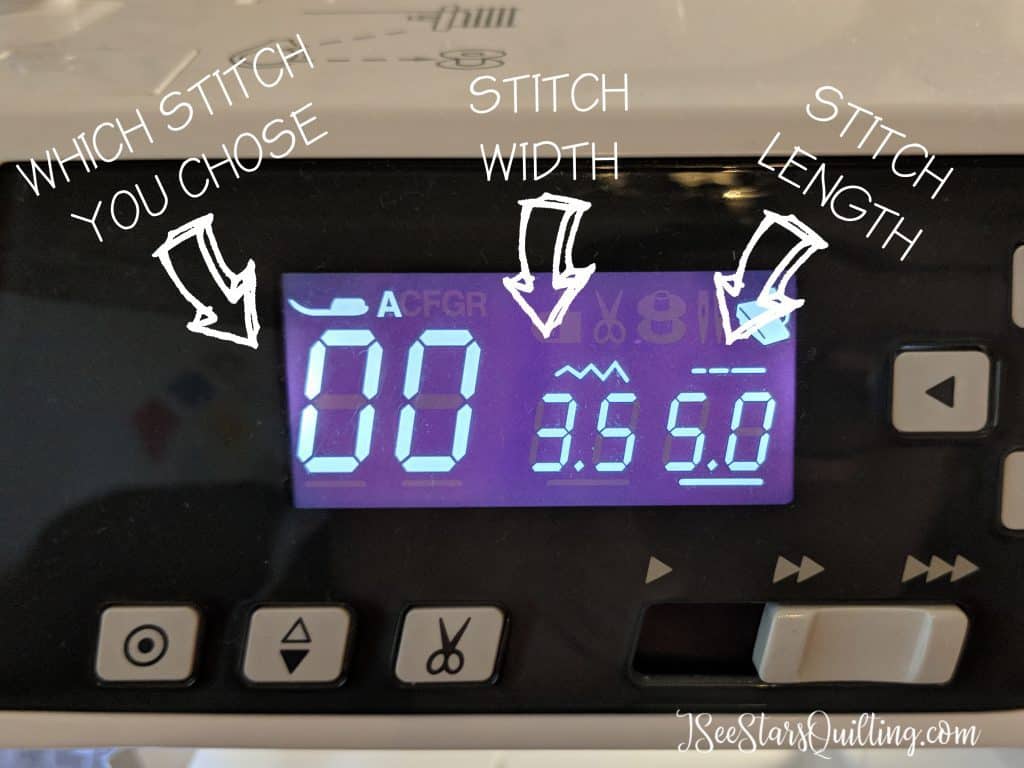
When you adjust the stitch length, it’s not the needle that is changing; it’s the feed dogs (the little fabric grippers in the center of the needle plate below the presser foot). The machine alters how much fabric the feed dogs will move before making the next stitch. Your needle will always do its thing and work steadily in a vertical motion.
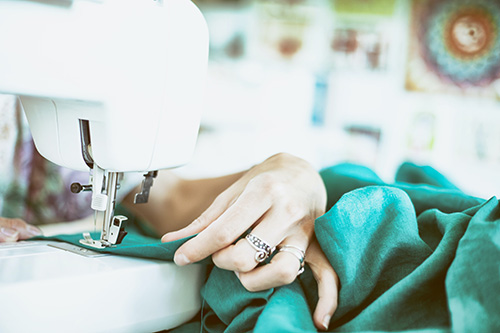
Your sewing machine’s manual may likely have a handy stitch chart of suggested settings and uses for your model.
The key thing you need to understand is this:
The smaller the stitch length number, the smaller the stitch. The larger the number, the bigger the stitch.
A longer stitch length is typically used for basting (temporary stitches), sewing with heavyweight fabric, or for defining a topstitch.
The smaller stitches are used for piecing fabric together and in situations where delicate fabric is less likely to come apart.
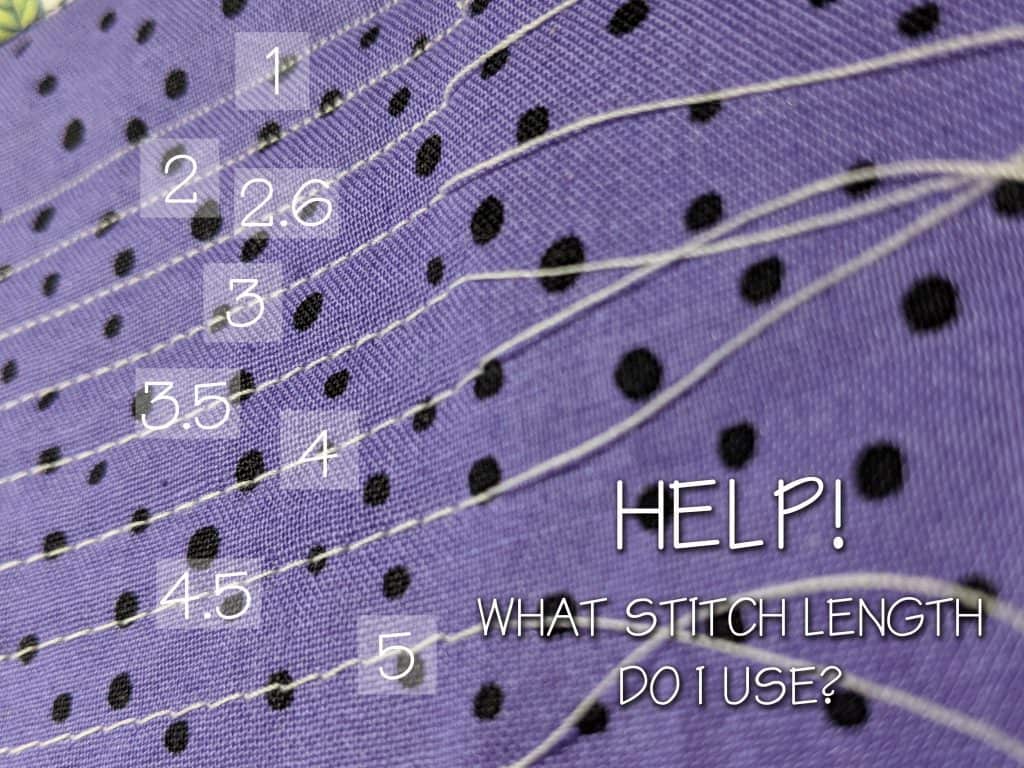
Decorative stitches vs. foundational stitches
Foundational stitches are the ones I like to refer to as the ones that hold everything together. Like, your piece wouldn’t hold together without this line of stitches. It is essential in the makeup and necessary in holding everything together.
Decorative Stitches are the stitches that may very well help hold everything together but they also are there to add a little sparkle too. Just a little extra. Worst case scenario, you wouldn’t HAVE to have the stitch to hold your piece together, but it helps. You can use decorative stitching to add in your own flair or your own personal style. You can even use some of the fancy stitches that may have come pre-programmed on your machine.
What stitch length you should use varies by project and purpose…
Here are the most common stitch lengths so you can choose the right one.
Most Common Stitch Situations!
To reinforce a seam or make it stronger
Use a tight (smaller number) stitch. This is also the case if you are sewing with silk or sheer fabrics. The exact length is not as important as making sure it looks well and gives your seams the strength it needs. Start with somewhere between a 2-2.5 on a test piece or scrap piece of fabric and decide from there. If your stitches still pull apart too much or seem to put pressure on the seams, go a little tighter
Quilt Piecing
Piecing is one of my favorite parts of the quilting process!
I used to think that the bigger the stitches were the more comfortable to rip out if (when) I made a mistake.
That is true, however… when you think about all the times your quilt is going to go through the wash and all the hours you spent making the quilt… you want those seams to hold up!
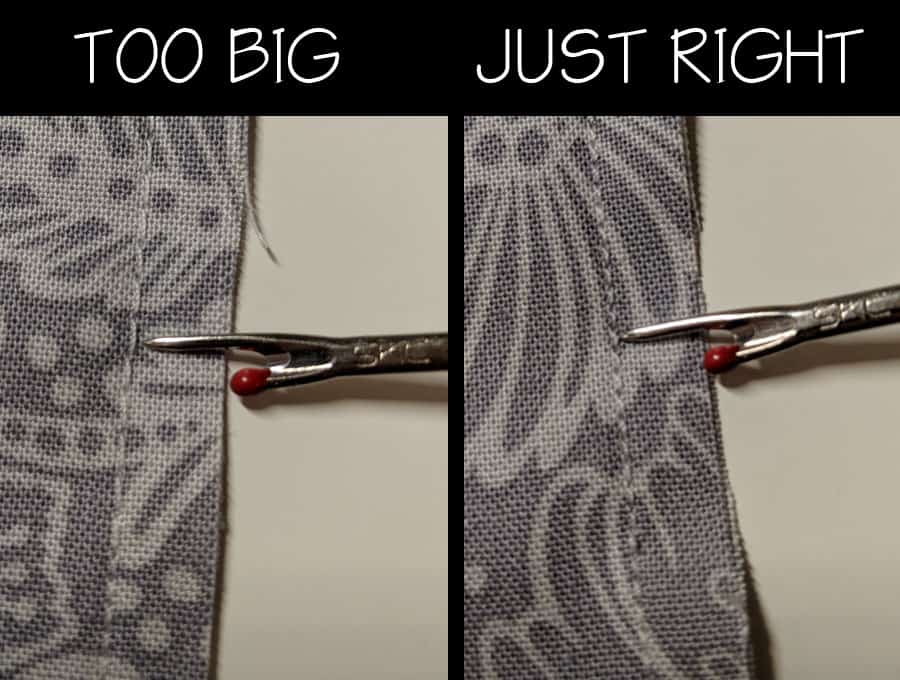
Use a stitch length of 1.8-2.0 when piecing fabrics for quilting.
Tinier stitches are a pain to rip out when you have to correct a mistake, but working with the overall quilt piece is much easier with the smaller stitches.
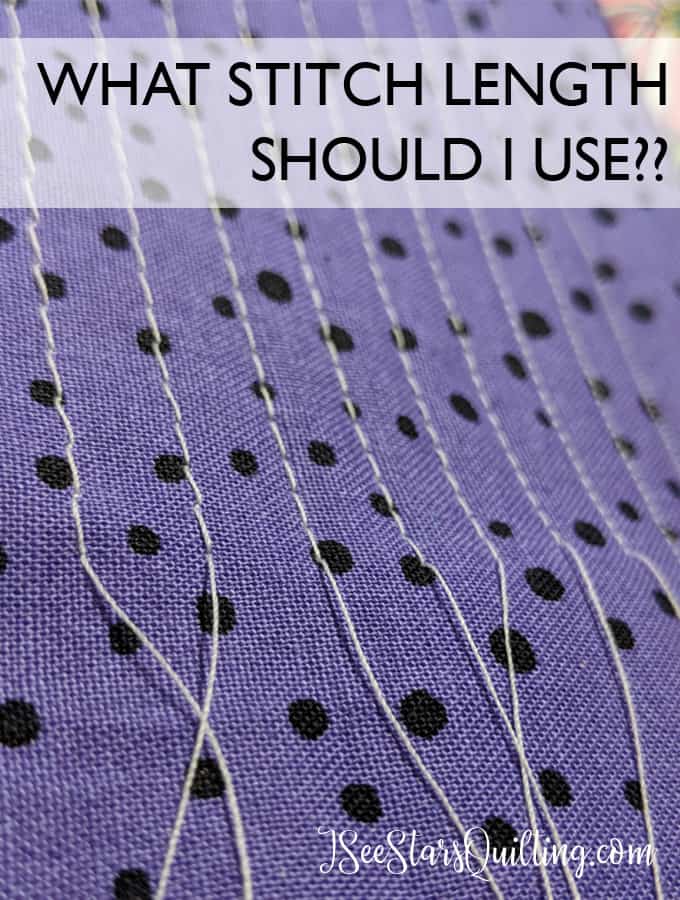
Basting
This one is easy… whatever the longest stitch is on your machine… use that one! I like a 5 stitch length.
The whole purpose of basting is that it is a temporary stitch. Therefore you want to make it easy to pull out.
These are stitches you will either remove later or are just used to reinforce your quilt sandwich until you can go back with better stitching.
Stretchy Fabric
Oh, how I love jersey knit fabrics! I have been trying to learn more to sew with it, but there has been a learning curve for sure.
If you’re using a stretchy fabric, you’ll want to use a longer stitch. Shorter stitch lengths can pull and pucker your fabric. You’ll know it when you see it. The fabric almost ruffles up when you aren’t even touching it. If you find that your stitches are puckering on a particular fabric, try adjusting the stitch length to allow for longer stitches.
Your stitches should be nice and smooth without altering the fabric underneath.
Quilting or Decorative Stitches
Decorative stitches such as topstitching or quilting will be visible on the finished project, a long stitch length is usually more desired. Long stitches tend to be more attractive than short stitches.
My personal preference… When I quilt, I usually will go with a 2.8-3.5 depending on the look that I am wanting.
When quilting, the finished result is that your quilt sandwich (backing, batting, top quilt) stays together when you use it and wash it. Keep your stitches small enough that you don’t have to worry about them coming out, but large enough that it isn’t going to take you 90 million hours to quilt it.
Those tiny stitches take a lot more time!
To summarize…. the stitch length is really going to be determined by how your fabric responds. It’s always a good idea to run a test piece and pull on the fabric a little bit to see how it reacts.
As a general guideline…
For durability, use short stitch lengths; for artistic looks use the stitch length that you like.
I hope you found this information useful. If you have any questions, feel free to let me know! I’m happy to answer your questions.
Happy Sewing!
PS for more Quilting tips and helpful charts, check out this post on Quilting Cheat Sheets that will save you hours!
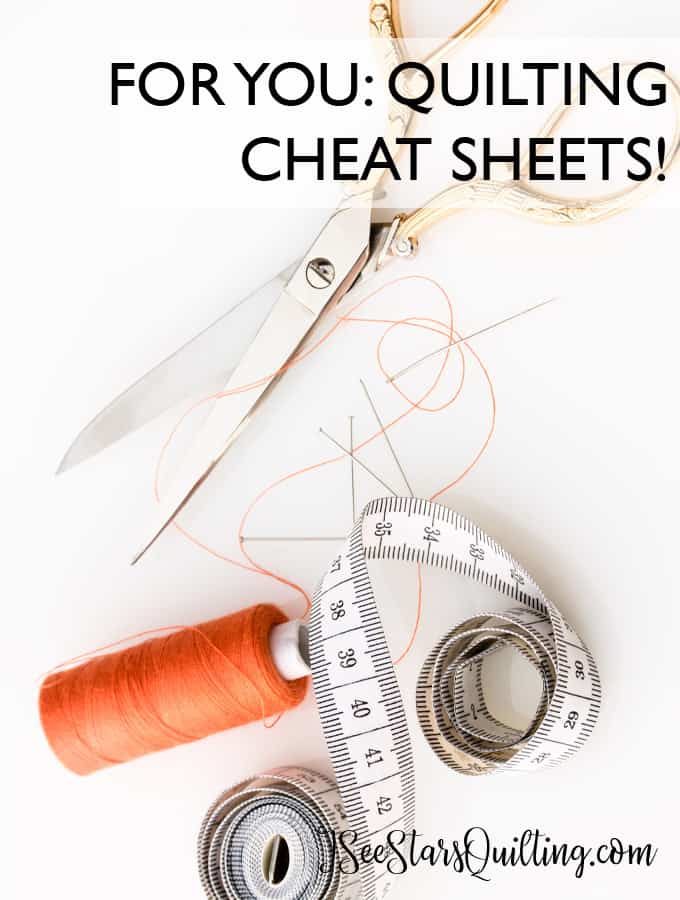
The Math Explanation of it
For those beautiful math nerds out there who love to know the reasons WHY things are what they are… here is how to unlock the secrets behind what those numbers on your machine are.
There are 25.4 millimeters in one inch. The formula is this:
25.4 divided by the metric length of the stitch such as 2.5 equals the number of stitches per inch.
To go the opposite direction, if a pattern requests 10 stitches per inch, divide 25.4 by 10 to get the millimeter setting of 2.5.
The average machine quilting stitch length chosen is between 10 and 11 stitches per inch. That is equivalent to a stitch length of 2.5mm
